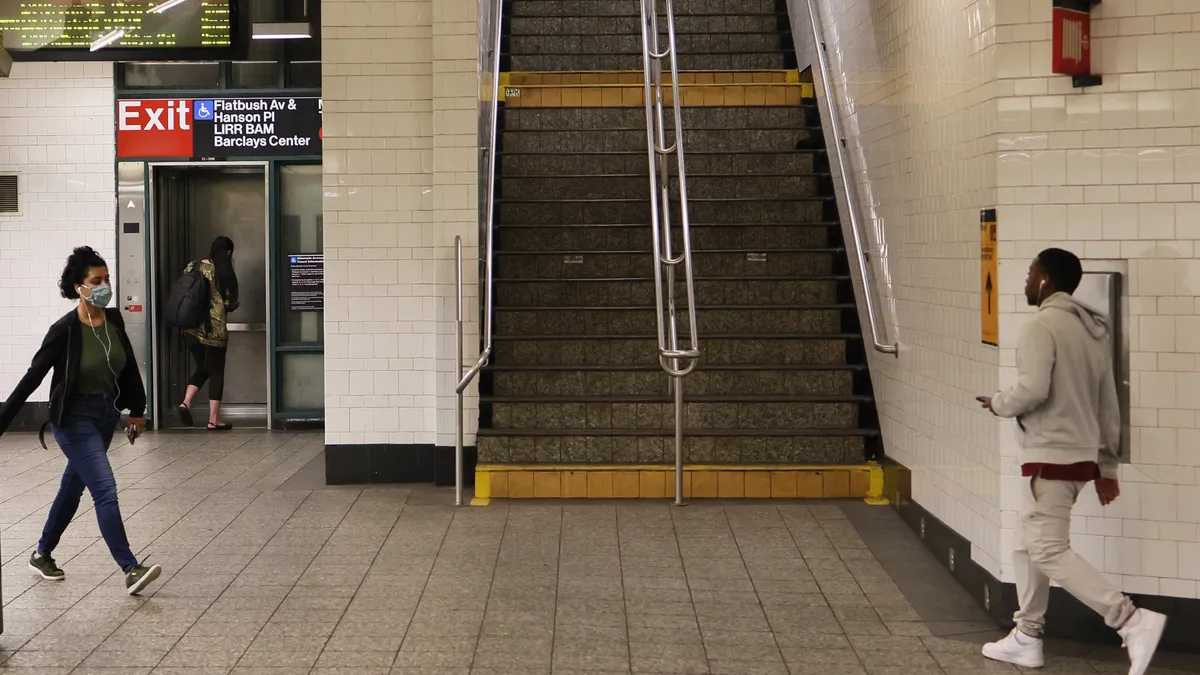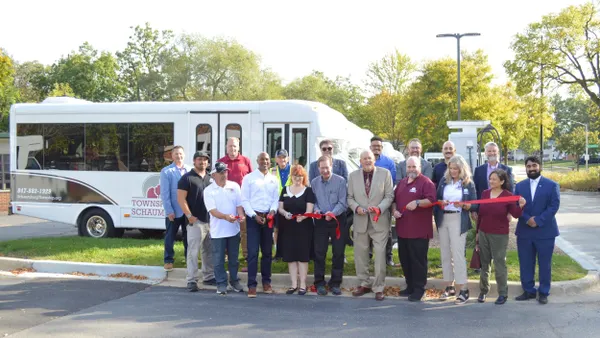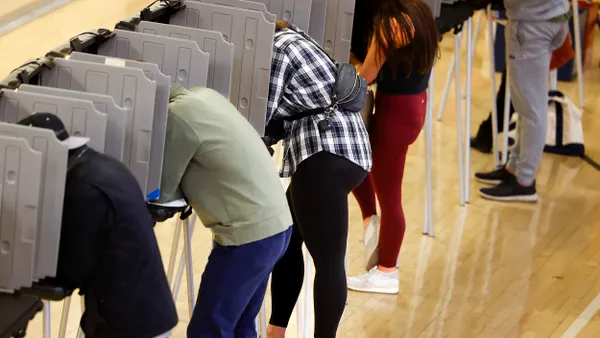Dive Brief:
-
The Metropolitan Transportation Authority has formally agreed to make 95% of New York City’s 364 currently inaccessible subway stations accessible to people who cannot use stairs by 2055, according to a Monday press release from Disability Rights Advocates.
-
The agency will add elevators or ramps to subway stations as part of a legal settlement approved by the Southern District of New York federal court and the New York State Supreme Court.
-
The MTA also committed nearly 15% of its five-year capital budgets to station accessibility unless unexpected capital needs arise, in which case it must still dedicate at least 8%.
Dive Insight:
The settlement stems from two lawsuits: one alleged that the system’s excessive station inaccessibility violated NYC’s human rights law, while the other alleged that the MTA often renovates subway stations without adding stair-free access, according to DRA, a nonprofit legal center involved in the lawsuits.
If the MTA makes the needed changes, NYC’s subway system will be accessible to more than half a million people who cannot use stairs, according to DRA. “Presently, only about a quarter of stations are usable by people with disabilities affecting their mobility,” the press release says. Other cities, including Chicago, have recently faced lawsuits over their failure to accommodate people living with disabilities.
According to the Centers for Disease Control and Prevention, more than 11% of U.S. adults have a mobility disability that causes serious difficulty walking or climbing stairs.
That figure may increase as the nation’s population ages. According to an Administration on Aging report, nearly 56 million people in the U.S. were 65 or older in 2020, a 38% increase over 2010. The same report found that 39% of people 65 or older have a disability that makes walking or climbing stairs difficult or impossible.
The MTA initially agreed to the settlement terms in June but needed court approval to make it official. At the time, the agency’s first Chief Accessibility Officer Quemuel Arroyo, said in a statement, "For far too long, the MTA and accessibility advocates have appeared at odds over a goal that we in fact share, making the transit system fully accessible. This settlement is not just the unveiling of a gameplan, but the start of a closer collaboration between the MTA and advocates to achieve our shared goal, to ensure that everyone has the ability to ride mass transit without needing to plan around accessible stations."
Under the settlement, the MTA will ensure that 81 stations will receive accessibility upgrades by 2024, with an additional 265 stations slated for accessibility improvements by 2055, according to the press release.
“For the first time, the courts, state and city leaders, and the MTA itself have agreed to something the disability community knew for decades: no one should be shut out of the subways, our city’s lifeblood. Station by station, this agreement will right a wrong to the eventual benefit of millions of people,” Joe Rappaport, executive director at the Brooklyn Center for Independence of the Disabled, said in a statement.
As part of the settlement, the MTA’s chief accessibility officer must report on the progress of station accessibility upgrades every six months, including information related to timelines, funding, delays, station substitutions and grant availability.












